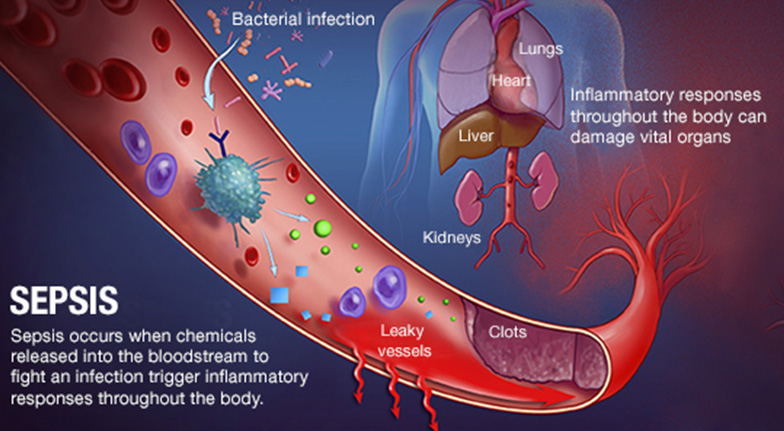Tattoo Skin Infection Treatment
What is a tattoo disease?
Tattoo diseases are skin contaminants that can happen in individuals with tattoos. Most are restricted to the region of the tattoo. In uncommon cases, the contamination can become serious or spread to different organs.
What sorts of diseases could tattoos at any point cause?
Two normal structures are:
Shallow contaminations that influence just the external layer of skin, like impetigo.
Profound bacterial contaminations, like erysipelas, cellulitis and sepsis.
How in all actuality do tattoo contaminations occur?
Getting a tattoo includes a mechanical needle saving ink profound into your skin. There, it dispatches a safe framework reaction. This interaction for all time traps ink inside your skin cells. In certain individuals, it likewise causes a tattoo contamination.
How quick could a tattoo at any point get contaminated?
A few contaminations happen soon after getting a tattoo. Others foster after some time, and you probably won't see them until some other time.
Could tattoo diseases happen on the off chance that I go to an authorized tattoo craftsman and trustworthy tattoo shop?
Any time you get a tattoo, there's a gamble of disease. Regardless of whether you go to an accomplished tattoo craftsman and the shop looks perfect and sterile, it can work out. There's likewise a gamble of disease with at-home tattoo packs and formal tattoos that are important for social festivals.
What causes tattoo contaminations?
Normal makes incorporate responses tattoo endlessly ink weakened with nonsterile water.
Responses to tattoo ink
The U.S. Food and Medication Organization (FDA) doesn't manage tattoo ink. Indeed, even compartments checked "sterile" can have microbes and different substances in them. Tainting can occur after the ink leaves the producer, regardless of whether the holder is fixed.
Responses can likewise originate from the actual ink. Ink is frequently produced using or incorporates substances that might destructive, include:
Creature based added substances.
Calligraphy ink.
Synthetics, like pH stabilizers and covering specialists.
Metal salts.
Colors utilized in printer toner and vehicle paint.
Nonsterile water
Weakening ink with water assists tattoo specialists with accomplishing a particular tone. However, microorganisms in tap and refined water can prompt diseases. Utilizing a recently opened compartment of sterile water can bring down this gamble.
Instructions to distinguish a contaminated tattoo
The most widely recognized side effect of a tattoo disease is a rash or red, uneven skin around the region of the tattoo.
Now and again, your skin may simply be aggravated due to the needle, particularly assuming that you have delicate skin. If so, your side effects ought to blur following a couple of days.
In any case, on the off chance that these side effects go on for up to seven days, see your tattoo craftsman or specialist.
See your primary care physician assuming that you experience at least one of the accompanying:
fever
floods of intensity and cold
strange shuddering
enlarging of the inked region
discharge emerging from the area
red injuries around the area
red streaking from the area
areas of hard, raised tissue
Instructions to treat a tainted tattoo
Minor knocks and rashes can as a rule be overseen at home with antibacterial salve, legitimate cleaning, and rest.
Assuming that you're encountering a disease, treatment relies upon the reason. Your primary care physician might take a swab of the area or spear a discharge pocket (in the event that one is available) to see what microbes or infection is causing the disease.
Generally speaking, your PCP can recommend an anti-microbial to assist with halting the contamination. In serious instances of disease, anti-microbial medicines might keep going for weeks or months.
Assuming your disease was brought about by MRSA microbes, anti-infection agents may not be helpful. Assuming MRSA causes a ulcer, your PCP might deplete it as opposed to giving you anti-toxins.
In uncommon instances of contamination, medical procedure might be required. Assuming your tissue has passed on because of the disease (rot), medical procedure might be expected to eliminate it.
Relentless, now and again bothersome, and excruciating knocks in your tattoo might be indications of an abnormal mycobacterial contamination. This requires long haul anti-toxin treatment.
Instructions to forestall tattoo contamination
Prior to getting a tattoo, see whether you're sensitive to any fixings in tattoo ink. Ensure you ask your tattoo craftsman what fixings their inks contain. On the off chance that you're hypersensitive to any of the fixings, request an alternate ink or try not to get a tattoo by and large. Notwithstanding, remember that it very well might be hard to tell what precisely is in tattoo inks as they aren't managed in any capacity.
Ensure that all things that touch your skin have been appropriately disinfected. Try not to have a timid outlook on getting some information about how they sanitize their instruments and fulfill wellbeing guidelines. It's your wellbeing!
Different interesting points prior to getting a tattoo include:
Is the tattoo parlor authorized?
Authorized parlors must be examined by a wellbeing office and meet specific security prerequisites to remain open.
Is the tattoo parlor legitimate?
It merits visiting a couple of tattoo parlors before you choose to get a tattoo to perceive how reliable the parlor is. Perusing surveys on the web or finding out about the shop through verbal exchange are great ways of measuring how safe the shop is.
Does your potential tattoo craftsman follow a wellbeing methodology?
Your tattoo craftsman ought to utilize a new, sanitized needle each time they start a tattoo. They ought to likewise wear gloves consistently.
In the event that your tattoo craftsman gave you guidelines on the best way to deal with your tattoo, adhere to those directions intently. In the event that they didn't give you clear rules a while later, call them. They ought to have the option to give you aftercare data.
As a general rule, you ought to do the accompanying to ensure the region recuperates appropriately:
Eliminate the wrap 3 to 5 hours after you've gotten the tattoo.
Clean up with antibacterial cleanser and water.
Utilize a perfect, dry washcloth or paper towel to pat the region (to dry it and to eliminate blood, serum, or overabundance shade).
Allow the region to air dry for a couple of moments. Try not to rub it dry — this can harm the skin.
Put a balm (not a salve), like Vaseline, on the area. Spot off the overabundance.
Rehash these means around 4 times each day for something like 4 days.




Comments
Post a Comment